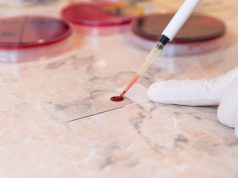Algorithm applied at a patient visit at age 18 years identifies those at risk for bipolar disorder at age 22
THURSDAY, Oct. 1, 2020 (HealthDay News) — A machine learning-based risk calculator may help predict bipolar disorder (BD) at age 22 years by using information collected at a visit at age 18 years, according to a study published online Sept. 16 in Acta Psychiatrica Scandinavica to coincide with the annual congress of the European College of Neuropsychopharmacology, held virtually from Sept. 12 to 15.
Francisco Diego Rabelo-da-Ponte, from the Federal University of Rio Grande do Sul in Porto Alegre, Brazil, and colleagues built a BD prediction model using machine learning techniques in a cohort of 3,748 individuals who were studied in visits at birth and ages 11, 15, 18, and 22 years. The Elastic Net algorithm was used with 10-fold cross-validation to predict who would develop BD by age 22 years.
The researchers found that 2.8, 0.6, and 2.3 percent of the cohort presented with BD type 1, BD type II, and BD not otherwise specified, respectively. The algorithm was able to predict who would develop BD at age 22 years, with the best performance at the follow-up visit at age 18 years. Suicide risk, diagnosis of generalized anxiety disorder, parental physical abuse, and financial problems were the most important variables for predicting BD at the follow-up visit at age 18 years. A high frequency of drug use and depressive symptoms was also seen in the high-risk subgroup of BD.
“This system will allow doctors to see who might be at risk, and the gain of four years before diagnosis could make a huge difference to the life of a young person,” Rabelo-da-Ponte said in a statement.
Abstract/Full Text (subscription or payment may be required)
More Information
Copyright © 2020 HealthDay. All rights reserved.








